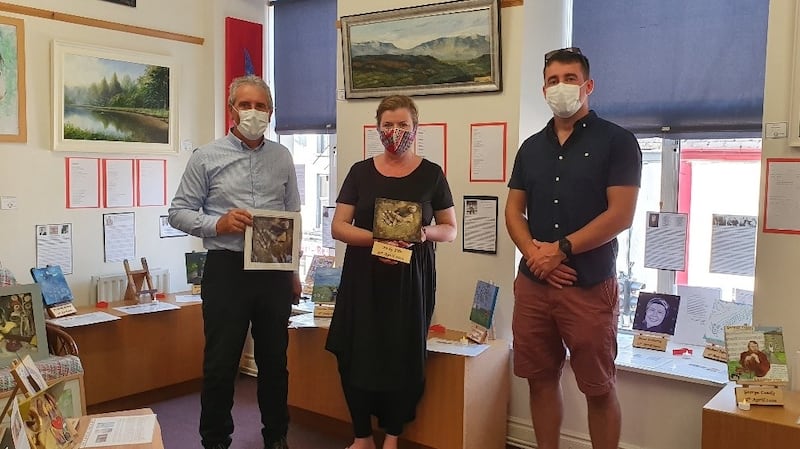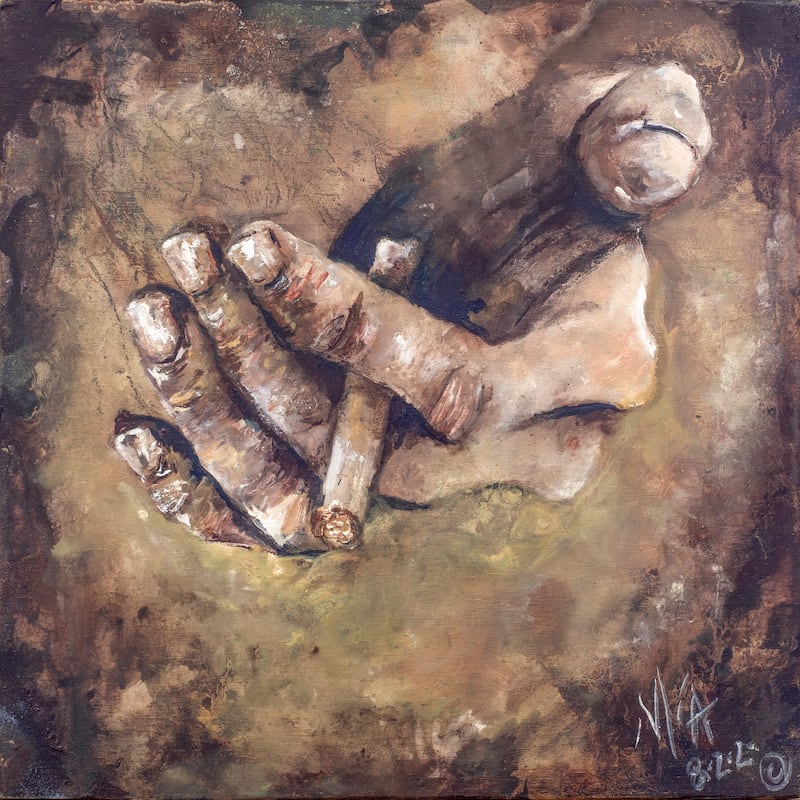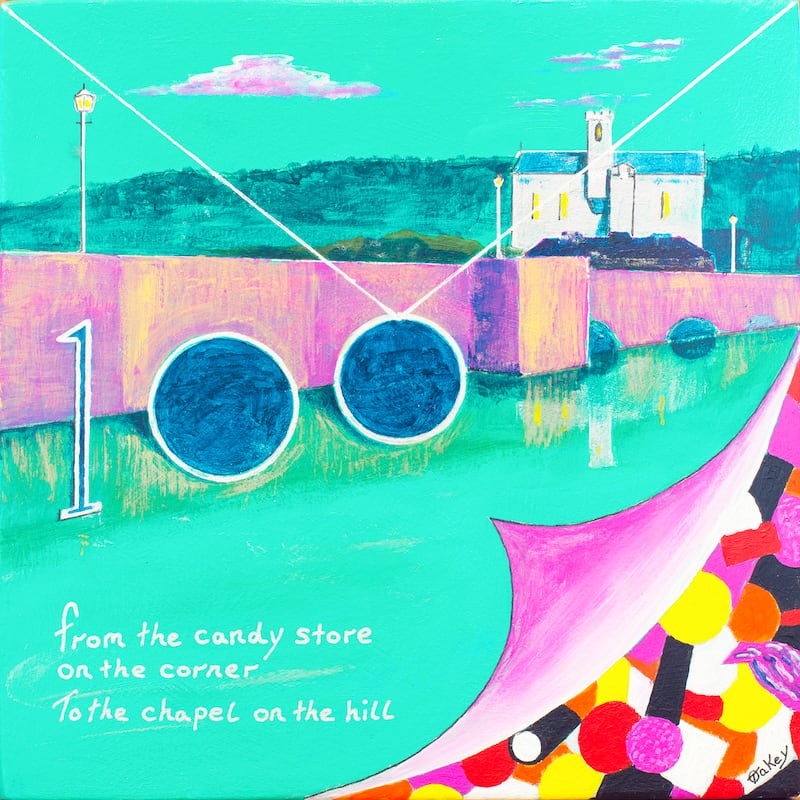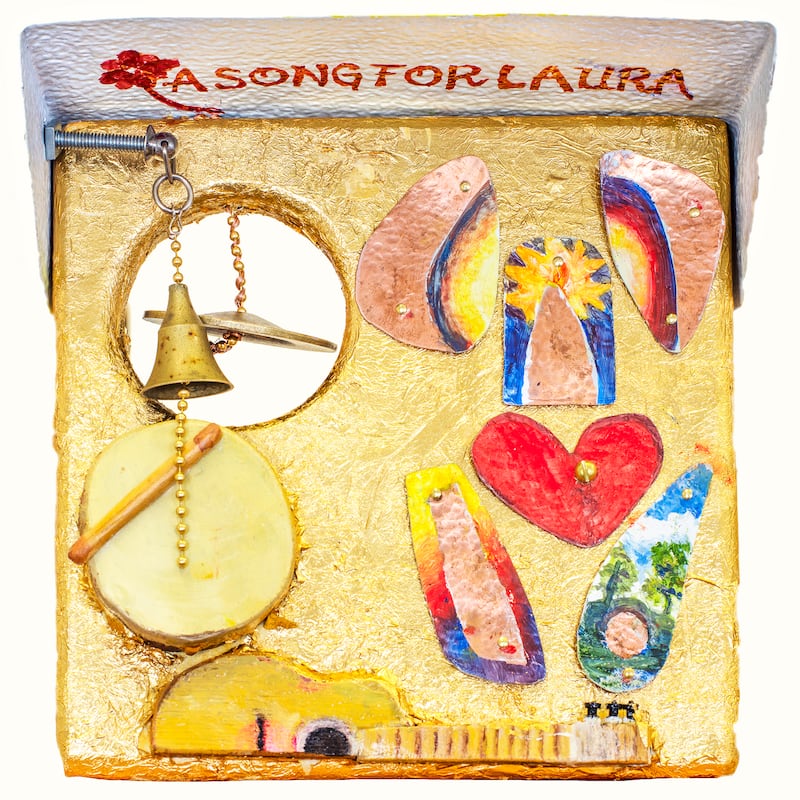“I don’t know if I can take another Irish funeral,” whispered my English-born and -reared cousin, Nicholas.
It was 2005.
We were walking behind the hearse carrying my father’s remains to St Mary’s cemetery. I’m not sure if he meant the packed church for the funeral Mass, or the long line of people who queued outside the funeral home the previous evening to sympathise and offer their condolences, who muttered “Sorry for your trouble” to my brothers, our aunt, myself. He might also have meant my father’s small house filled to overflowing the previous day, with neighbours and relatives spilling out into the warm July garden exchanging memories and stories, a neighbour handing in a plate of buns through the kitchen window.
They don’t do funerals like that in England. Yet, in spite of that great up-swelling of support, my brothers and I were all hit by that great punch of loss, and learned that grief was as much physical as it was emotional.
Now it’s 2020.
How are you supposed to deal with the death of someone you love, someone you have cared for, in a time of a global pandemic, a period of national lockdown, with so many restrictions in place that the usual supports are kicked away from underneath you? This is the situation that many ordinary families, here in Carrick-on-Suir and elsewhere, found themselves in from the month of March onwards, when lockdown was introduced as the Coronavirus, Covid-19, reached Ireland.


Linda Fahy is founder and owner of the arts collective, The Tudor Artisan Hub, which is ostensibly a small, but busy, art and craft shop on the Main Street. It has gallery rooms over two floors whose walls are filled with work by the very talented artists who live in the Suir Valley region and beyond. In truth the Hub is much more than a shop, more than an arts collective. Linda operates it as a portal to many, many creative projects and experiments in all the creative arts.
I run Writing Changes Lives, among other things, based on the radical work of the late Pat Schneider, who insisted that “writing as an art form belongs to all people, regardless of economic class or educational level”.
During the summer Linda invited me to join her in a special project for Culture Night 2020, which was scheduled for Friday, September 18th. We had collaborated on several projects in recent years, bringing together writers, visual artists, film-makers in a creatively generative mix. These projects were often challenging, always fun.
This, however, would be different. We were to research how families had experienced the illness, death and burial of a loved one during the Covid-19 lockdown, from March through to the end of June. We would then invite the visual artists and writers in the community to work out how they might somehow alleviate, through the creative arts, the particular pain and trauma of these families. I said yes to collaborating, but with no little trepidation. This was not a project to take on lightly.

We began by getting details of the bereaved families through local clergy and others in the community. Linda contacted those who indicated a willingness to be part of this project and set up a schedule of interviews, each for one hour. There were more than 20 families and the interviews were conducted in pairs by either Linda and myself, or Linda and Mary McGrath, who also writes with me at Writing Changes Lives. Each interview was recorded with the permission of the families for the purpose of research. We decided to focus on two aspects in the interviews: to get a sense of the personality and life of the person who had passed away and also to learn of each family’s direct experience of coping with the dying and death of a loved one in the time of Covid-19.
As we interviewed the families, some just one representative, others two or more together, I was very struck by the stories, by the rich details of the lived lives of those who had passed away. It was deeply moving to see the faces of the speakers brighten as they recounted some anecdote in the life of their father, mother, uncle, daughter, son, sister, brother, aunt, grandmother. We heard individual stories of difficulties and challenges overcome, of happy times and celebrations, of ordinary lives that became extraordinary in the telling.
But the recounting of the experiences of the families around the time of death and the awful isolation of the funeral is something that I will not easily forget.
These families were denied all of the supports of the traditional rituals and community rallying that still happens in small towns and villages around Ireland, and it seemed to me as I listened that they were still in a state of shock and bewilderment at the turn of events. How could you even begin to comprehend it? Undoubtedly, the lockdown restrictions around funeral size, the unexpected restrictions even at the graveside, added immeasurably to their suffering and grief, their feelings of isolation. There were pauses as tears inevitably came as they spoke.
Several mentioned the shocking sound of the church door banging shut as they gathered for the funeral Mass with the maximum allowed, 10 people, physically distanced, in a very large church. Many recalled the barriers at the graveside and the upset at not being able to carry a loved one or lower them down to their final resting place. There was upset and anger as some recounted being denied access to their parent in the nursing home, sometimes for many weeks, until he or she died. Then they were allowed in. But it was as if insult was added to injury.
There were the pitiful “window visits” and the gratitude that at least their loved one was in a ground-floor room. We heard of the painful discovery of letters, sent to make up for proscribed visits, being left unopened and not shared with the patient. We heard of a nursing home’s decision to send one man to hospital and the ambulance driver who came to bring him telling the wife and daughter that if it was his father he wouldn’t send him, telling them that “you will never see him again [if moved to hospital]”. Because their husband / father would no longer be near a window. More than one daughter believed her parent passed away in the nursing home from loneliness. Children sat in hospital waiting rooms as they were not on the list to say their final goodbyes.
As we listened to families share their experiences, their own isolation and loneliness was palpable in the room. Because of the blunt force of national restrictions they were cut off from necessary family and community supports. Even details of deaths and funerals were not being publicised in the usual way during this period in case it attracted more numbers, against the regulations. But it seemed to us too that simply listening with attention offered some consolation; the opportunity to share the experience, of giving it words, was in itself some kind of healing balm.
The question then is, what do we need on a basic human level at times of greatest challenge? Don’t we have an innate need to be accompanied, to feel understood, for others to reach out, to find ways to pierce the loneliness? This is what the creative arts and this project sought to achieve.
In all, 45 creative artists in the wider community responded to the call out to contribute to this project. Visual artists were each given details of the life of one person who had passed away from transcriptions of the recordings, a board 20cm x 20cm, representing the year, and asked to paint a symbolic representation that honoured the life of the person. I struggled to come up with a theme for the writers who had offered to contribute a piece, very aware of sensitivities, of the potential to strike a wrong note. As we continued to listen to the testimonies of the families the phrase “love in action” came to me. Everything about the experiences being described, the struggles, the happy times, were to me true examples of love in action.


As the weeks passed and the work from the visual artists and the writers began to come in we could clearly see how this was now becoming an expression of empathy, of beauty. Each painting expressed, in ways that were almost uncanny, the connection that the individual artist had made with the life of the person they were entrusted with. Between the artwork, the prose and poetry and also some music, this was becoming a celebration. We knew we had something very special.
The date for Culture Night was approaching and with it ever more slippery regulations around gatherings and events as numbers of infections were again rising. Trying to make sense of the regulations was similar to solving a Rubik’s Cube. Every time you changed one aspect, everything changed. The original plan had been to set it up in St Nicholas’ Church, a large 750-seater church, with plenty of room for distancing and viewing. But the intersection of blunt regulations and the practicalities of stewarding the exhibition led, after many fraught days of phone calls by Linda, to the decision to show it in the upstairs gallery of The Tudor Artisan Hub.
The format of the exhibition for Culture Night was finally confirmed – the exhibition would be private to the family and each family would schedule a visit, between 10.30am to 9pm, in a group of no more than four. As each family first encountered the creative work commissioned for their loved one the day became one filled with surprise and joy. There were gasps of amazement at the artwork, exclamations such as, “That’s her!”, many healing tears into face coverings, and a real sense of renewal all day as the original poems and prose from the writers, plus music and song, played on an audio loop in the background.
This creative project disrupted the helplessness we had all felt as the callous and blunt nature of the Covid regulations, necessary as they were and continue to be, affected those in the most vulnerable of circumstances in the community. We could do something beautiful, we could offer the arts as a means of transcendence, celebration and renewal.
This Culture Night project, In ár gcroíthe go Deo / In Our Hearts Forever, has clearly shown the power of community and the transformative and healing potential of the creative arts at a time of deep personal and collective suffering.
















